The Early Schools of Indian Buddhism Series
General history of Buddhist schools according to the ‘Southern Buddhists’ of Theravada
Part 5
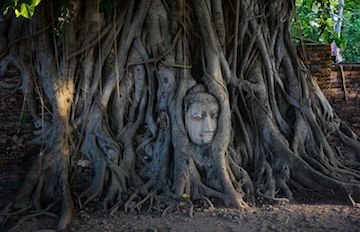
In the previous post, we looked at the general history and development of the early Buddhist schools according to Vasumitra; who was a 1st century A.D. teacher of the Sarvastivada school of Northern Buddhism in North-West India and Kashmir. Now, we will be looking at the general history and development of the early Buddhist schools according to the texts of the Theravada school of the ‘Southern Buddhists’ as it has been preserved in the Pali canon.
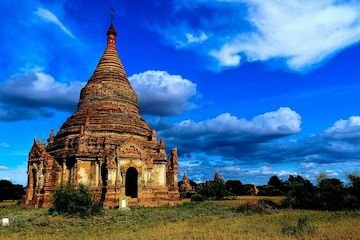
The Theravada accounts of the early Buddhist schools, as recorded in their tradition, can be found in the Dipavamsa (the chronicle of the island (Ceylon)), the Mahavamsa (the great chronicle), the Kathavatthu (the Points of controversy), and the Kathavatthu commentary (kathavatthuppakarana-atthakatha).
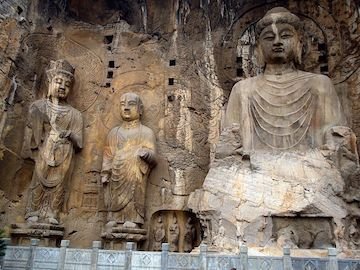
We will start with the Kathavatthu account, and follow the enumeration and division of schools as mentioned in this text and its commentary, as it the most complete and extensive. As you will see, it mentions twenty-seven branching schools, and not seventeen (plus Theravada as the root school, as part of the ’18 schools of early Buddhism’), as is so often thought of when discussing early Buddhist schools. Another advantage is that it has a very extensive two-hundred-plus-page commentary that provides even more details about the dealings of the ‘controversial’ points of view from the twenty-seven schools.
The root school — Theravada
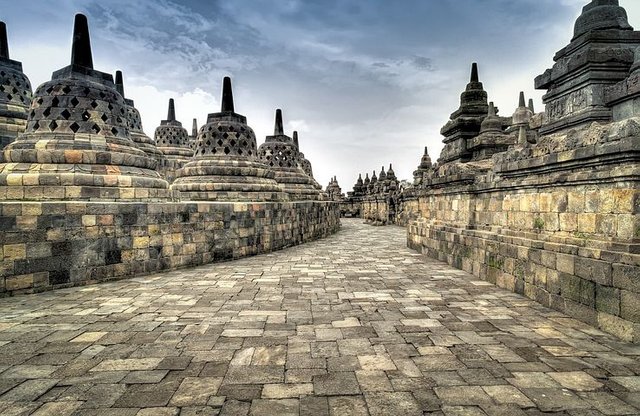
In the Theravada tradition, their school is considered the equivalent and direct lineage from the original Sthaviravada that existed at the time of the Buddha and that recited the teachings and the Vinaya at the First Buddhist Council. Therefore, if you consider a tree with its trunk and its branches, to this tradition, they are the root of the tree, and the other schools are its branches.
The dates given below, for the time of the origin of each school, are somewhat approximate than historically exact. Although there is archeological and textual evidence that prove the existence of these schools, there are no historical records that prove the exact date as to when these schools formed.
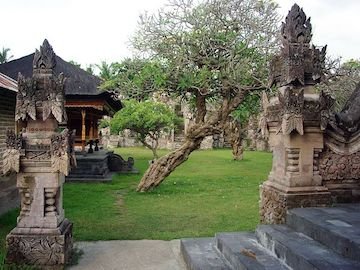
Unlike the sequence in which the Kathavatthu brings up the branching of the schools, I have put the branching in chronological order.
From the root Theravada branched off school No. 1. Vajjiputtakas (Vatsiputriya) around 400 B.C.
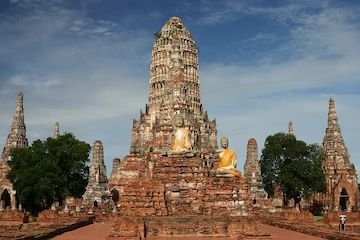
From school No. 1. Vajjiputtakas (Vatsiputriya) branched off the following schools:
From school No. 3. Gokulikas (Kaukkutika) branched off two schools:
From school No. 5. Bahulikas (Bahusrutiya) branched off school No. 6. Cetiyavadins (Caityasaila) around 100 B.C.
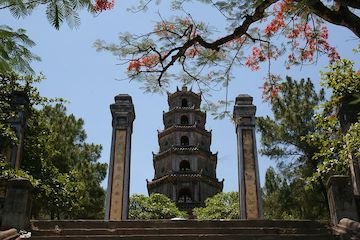
Branch 2 — The Mahasanghikas branch — closely linked to the Vajjiputtakas
From the root Theravada school branched off school No. 11 Mahasanghikas (Mahasamghika) around 400 B.C.
As can be seen from the branching off date of 400 B.C., it coincides with the date given for school No. 1 Vajjiputtakas (Vatsiputriya). These two names at this date are virtually synonymous with each other, as to whom they represent in 400 B.C. as a group. The Vajjiputtakas held their council after the traditional Second Council, and by the name, they became the Mahasamghika school. I have kept them separate by name as distinct ‘schools,’ as that is how they are being treated in the Kathavatthu. Interestingly, only two points of controversy are associated with the No. 1 Vajjiputtakas (Vatsiputriya), whereas sixteen points of controversy are associated with the Mahasamghika.
The Kathavatthu explains it as follows in its commentator’s introduction: “Refuted by those Elders who had performed this task, ten thousand of the Vajjiputtaka monks seeking adherents, and gaining but a weak following among themselves, formed the school called Mahasamghika.”
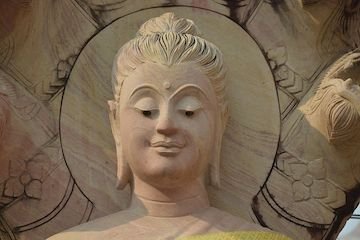
From the root Theravada school branched off school No. 12. Mahimsasakas (Mahisasaka) [early Mahimsasakas] around 375 B.C.
From school No. 12. Mahimsasakas (Mahisasaka) [early Mahimsasakas] branched off the following schools:
In total, including the root school, this makes the traditional eighteen schools of early Buddhism. The Kathavatthu concludes this in the following way:
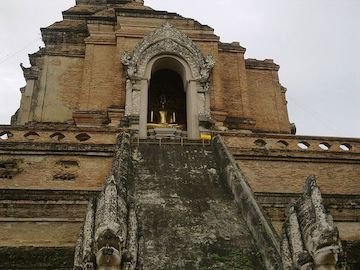
“Thus from the Theravada arose these eleven seceding bodies, making twelve in all. Moreover, thus these twelve, together with the six schools of the Mahasamghikas, constitute the eighteen schools which arose in the second century [after the Buddha’s Pari-Nirvana]. They are also known as the eighteen groups, and as the eighteen sects.”
The Kathavatthu mentions these schools by name but does not go into depth about them, except for No. 18 Hetuvadins, who have 7 points of controversy associated with them.
The later non-branched schools (190-250 A.D.) — 3 schools and 4 sub-schools
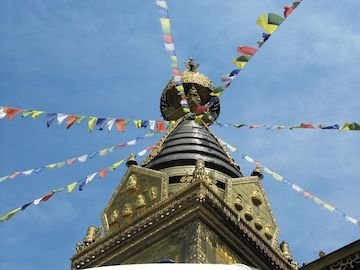
In my view, the name given to this ‘school’ was not how they would refer to themselves, but instead, it is a disparaging and defamatory term for a Mahayana school of thought, to deal with the points that they held. The fact that they are also being referred to as maha-sunnatavadins (the great emptiness school) is a good indicator that this is a Mahayana school. However, in the view of the Theravada, the maha-sunnata is not ‘great,’ it is deemed ‘wrong emptiness’ (ayoga-sunnata).
The term Vetulyaka in Pali or Vaitulika in Sanskrit means ‘the doctrine of the Magicians’, and this seems to refer to the doctrine of transcendental nature of the three bodies theory of the Buddha, as well as the doctrine of illusion (maya).
Another aspect to this, according to the Mahavamsa, is that this doctrine was associated with the Dhammarucikas, a heterodox school in Ceylon that branched off from the Theravada school. This school is not mentioned as Dhammarucikas in the Kathavatthu. Vetullavada is generally identified with Mahayana, and the canon of the Vetullavadins (Vetulla-Pitaka), is condemned as abuddhavacana [not the teachings of the Buddha].
Section 2 — The Dipavamsa account
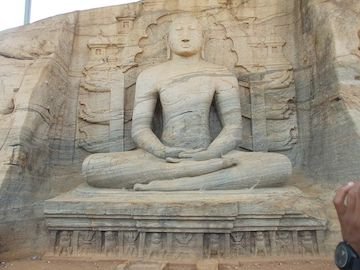
Chapter four of the Dipavamsa discusses the history of the Second Buddhist Council and mentions the Vajjiputtakas (Vatsiputriya) and their ten non-permissible rules, but does not mention them as Mahasamghikas immediately, but only later as the Mahasamgiti (the great council), and refers to the settled doctrine of ‘the great council’ as contrary to the Buddha’s teachings.
This text charges the Vajjiputtakas (Vatsiputriya) with the following (settling on a doctrine that was contrary to the true teachings of the Buddha):
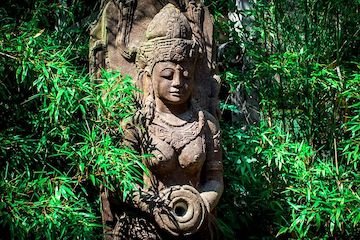
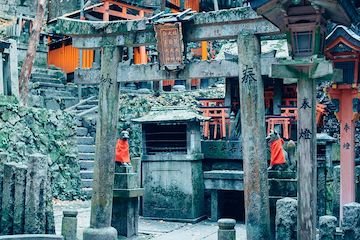
The sub-branches of the Vajjiputtakas / Mahasamghika are the same as given in the Kathavatthu, except for the following:
The rest of the account is the same for branch 3 schools and sub-schools.
Of the non-branched schools, the Dipavamsa does not mention the Hetuvadins (No. 18), Vajiriyas (No. 20), Uttarapathakas (No. 21), the name of the Andhakas (No. 22) [although it does mention the four sub-schools by name], and the Vetulyakas (No. 27).
Section 3 — The Mahavamsa account
Chapter three of the Mahavamsa discusses the First Council, chapter four of the Second Council, and chapter five the Third Council. There’s no mention of the Fourth Council, as the Theravada tradition does not acknowledge it as a valid one. Out of these three chapters, only the account on the Third Council gives us information about the schools.
The first difference in the account of the Mahavamsa, when compared to the Dipavamsa and Kathavatthu, is that it mentions the Mahasamghika as the first branch off, instead of the Vajjiputtakas (Vatsiputriya). It considers the latter to branch off later:
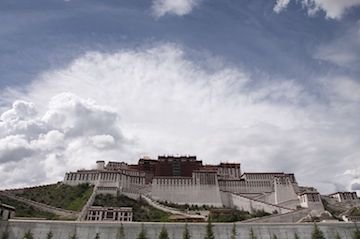
“And yet two more (groups) parted from the followers of the Thera-doctrine: the Mahimsasakas and the Vajjiputtakas.”
For the school No. 6. Cetiyavadins (Caityasaila), it agrees with the Kathavatthu that it branched off school No. 5. Bahulikas (Bahusrutiya).
The rest of the account about branch one and two schools and sub-schools is the same as given in the Kathavatthu and the Dipavamsa.
Of the non-branched schools, the Mahavamsa does not mention the Hetuvadins (No. 18), Uttarapathakas (No. 21), the name of the Andhakas (No. 22) [although it does mention the four sub-schools by name], and the Vetulyakas (No. 27). It calls school No. 23. Pubbaseliyas (Uttarasaila = Purvasaila) the ‘first Seliya,’ and school No. 24. Aparaseliyas (Aparasaila) the ‘other Seliya.’
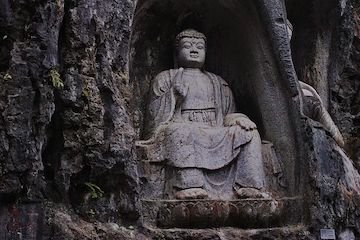
The second difference in the account of the Mahavamsa, when compared to the Dipavamsa and Kathavatthu, is that it mentions two schools from Ceylon that branched off the Theravada:
The account gives no further details on these two schools. For that, we will have to check the Nikaya Sangraha, a Sinhalese chronicle, in which it states that the Dhammarucika branched off the Theravada four hundred and fifty-four years after Buddha’s final-Nirvana. The Sagaliyas branched off the Dhammarucika seven hundred and ninety-five years after Buddha’s final-Nirvana.
The Nikaya Sangraha also gives an account of the origin of this school. A monk named Maha-Tissa was convicted of living in domestic intercourse and expelled by the Mahavihara monastery. He thereupon left with his followers and lived apart at Abhayagiri. They were strengthened by the arrival of some monks from South India, descendants of the Vajjiputtakas school. Their teacher was Dhammaruci, and when they joined the Abhayagiri monks, Maha-Tissa himself took the name of Dhammaruci and his followers became known as Dhammarucikas. The Sagalikas took their name from their leader, Sagala Thera.
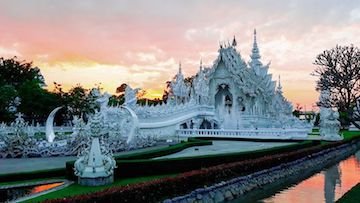
In the next article, the Buddhist schools at the time of the First ‘Maha-kasyapa’ Council at Rajagaha will be discussed.

- Introduction to the history of Buddhist Councils and Schools-Part 1
- The Buddhist Councils — Who, when, where, and why?Part 2
- The Buddhist Councils — Who, when, where, and why?Part 3
- The History Of ‘Northern Buddhists’ of Sarvastivada - Part 4
- The Ten Stages of the Mahayana Bodhisattva Path-The Two Preliminary Stages-Part 1
- The Ten Stages of the Mahayana Bodhisattva Path-The Two Preliminary Stages-Part 2
- The Ten Stages of the Mahayana Bodhisattva Path-The Two Preliminary Stages-Part 3
- The Ten Stages of the Mahayana Bodhisattva Path-The Two Preliminary Stages-Part 4
- The Ten Stages of the Mahayana Bodhisattva Path-The Two Preliminary Stages-Part 5
- The Ten Stages of the Mahayana Bodhisattva Path-The Two Preliminary Stages-Part 6
- The Ten Stages of the Mahayana Bodhisattva Path-The Two Preliminary Stages-Part 7
- The Ten Stages of the Mahayana Bodhisattva Path-The Two Preliminary Stages-Part 8
- The Ten Stages of the Mahayana Bodhisattva Path-The Two Preliminary Stages-Part 9
- The Ten Stages of the Mahayana Bodhisattva Path-The Two Preliminary Stages-Part 10
- The Ten Stages of the Mahayana Bodhisattva Path-The Two Preliminary Stages-Part 11
- The Deathless In Buddhism
- The "Timeless" Teaching-Being Beyond Temporality
- The Nine Successive Cessations In buddhist Meditations - Part 1
- The Nine Successive Cessations In buddhist Meditations - Part 2
- The Nine Successive Cessations In buddhist Meditations - Part 3
- The Twelve Links Of Dependent Origination
- THINGS to DEVELOP and THINGS to AVOID
- The First Noble Truth
- The Second Noble Truth
- The Third Noble Truth
- The Fourth Noble Truth
- 10 Fold Path Series
- EATING MEAT — WHY THE BUDDHA WAS NOT A VEGETARIAN
I will flag comment spam at 1% strength. If you keep on spamming my post, I will flag you at 100%. I don't care if you have limited English abilities, write a couple of sentences about this article, no copy-paste, please. I will flag: one sentence comments, links to your blog and begging for up-votes and follows. Also, I will flag comments that have nothing to do with my blog's article. I will also check your comment section to see if you have been comment spamming on other blogs.


 A link to My Blog
A link to My Blog
Are all the branches and different schools still active to this day? What happens if a person want s to become a Buddhist. Does he or she have to choose a particular school?
I am not here to recruit new Buddhist, I’m sharing what I enjoy learning.
To become a Buddhist you take refuge in the Buddha, Dharma (teachings), and sangha (the community of enlightened minds). You can leave any time you wish, ithe Dharma is like a boat you build that sails the sea of body mind sensations. You can take this vow on your own or through a teacher, you can have a ceremony depending on tradition.
The schools that exist today come from the original schools that existed, but along the way 18-21 schools died out for various reasons stated in the article.
I have had teachings from the Burmese Theravada tradition, Korean Soen (Zen), and Tibetan Kagyu and Nyingma tradition. All totally different methods but grounded in Gotama’s teachings.
What I tell people is go to YouTube and watch some videos from Mahayana, Theravada, and Vajrayana teachers. Pick a tradition that moves you the most. Be careful, there are lots of cults and hucksters out there. But even if one falls pray to scammers, you can use the lessons you learned to break old conditioning☺️
The reason I like Buddhism is there is a way out, you can leave anytime you want it isn’t a cult😉
Thanks for the response. I did not think you were recruiting. I am just curious about how Buddhism handles itself. I consider myself not following any particular set of beliefs.
so interesting post thank you so much for sharing
do you believe in buddha!?
I do believe in what Buddha taught if he existed doesn't really matter because the meditation techniques and lesson have worked for me and I have served at meditation retreats and laypeople's sanghas @machhour and have seen the same results from other people. I had night terrors since I was a small child and PTSD from being sexually molested, physically and mentally abused by my stepfather. No matter how much therapy I worked through and pills to help me, I couldn't let go of the trauma conditioning.
I let go of my trauma after my second meditation retreat back in 1993, and I haven't suffered anxiety or night terrors since that time. I do still get anxious, but that is typical anxiety that everyone suffers from being a social creature.
I've had to work at learning new ways of reacting to sense data without hooking into old conditioning. No one, no magic spell, no god, no pill can do this kind of work. Conditioning is deeply rooted, I think it may even be imprinted in our genes which we pass onto our offspring. The meditation techniques remove the imprints permanently. I needed to build a new framework for my life, and I used the information from the stories and lessons Buddha taught to rebuild my life for the better.
I understand perfectly your pains, it is not easy to face this but for me
True happiness and inner peace flow from our submission to the commandments of the Creator and Lord of this world. God said, in the Qur'an:
"Is it not by the evocation of God that the hearts are quiet?" (Koran 13:28)
Inner peace is in Islam, I advise you to read more about Islam or just listen to the Koran you will feel at peace and will help you a lot to overcome the stress of life
I am happy you have a religion that brings you peace and happiness @machhour.
Dear friend @reddust, I am in a multidoubt; all these schools and their ramifications, the sight and practice of their dotrines, own, adopted or modified; it incites me to ask: Which is the true dotrine to follow? Which school retains the original dotrine in certain lines?
In the world, there are many doubts with all the different philosophies of life; be they Eastern or Western. Buddhism, Mormons, Christians, Islamists.... All converge on something in common: "to do good to earn eternal life". Is this the idea that moves us?
@amigoponic, you will find consistency within all the teachings especially regarding the Pali Canon of the Theravada, Tibetan's, and the Chinese text from the original teachings of the Buddha recalled by his assistant Ananda. All schools follow the 4 Noble Truths, Eightfold Path, Dependent Origination and many other instructions. The main arguments were over rules of the monastic community, classification of mind states, relative and absolute reality, what is empty and what is inherent regarding our true nature in the Abhidhamma doctrine, which is like an excel file regarding mind and matter...hahaha
Buddhism walks the middle way between what we label eternal and nihilism. The path a Buddhist walks is paved with virtue, wisdom, sympathetic joy, compassion, loving-kindness, right action, right view, right effort and so on. We often mistake labels for what is real, and I think this is what a lot of the teachings are for ripping the labels and old habits off our eyes so we can see reality as it is and make the correct choice regarding how we should or should not take action. Of course, there is karma, each of our actions is like a seed that we plant that will sprout in the future. The aim is to stop sowing the seeds of karma and walk away free.
The approach you give me pleases me, goes more with my personality. I'll dig deeper based on the information you kindly give me. Thank you again. Blessings and prosperity.
a very complicated history, in Islam also the source of trust is divided into 7:
and each one is divided again into several streams, so that there are 72 groups
I've heard of the Shia, but all of the other schools I know nothing about. I think that a religion that has been around for hundreds if not thousands of years is going to be complicated because of the human factor...hahaha <3
I agree with you my friend, man as a source of change, sometimes change to a worse direction :))
the divisions in Islam stem from the wrong meditation and most of the political problems that change to the issue of belief ..
of the many schools that developed only Ahlussunnah waljamaah recognized by Muhammad (Prophet Muhammad).
The divisions in Buddhism have to do with views of reality which are related to meditation in a way and politics. Plus Buddhism dependended on Kings to support their monastary. There was a lot of compitition for funding and that also brought in a lot of politics! Thank you @steemitnatural
thank you also your explanation bag my friend
@reddust, The load Buddha after stagnation, In India started lot of school .The Dhamma said by the Buddha was written down,Because the Dhamma can be distorted over time.
This happens in Samsara @templeflower. When Gautama Buddha found the Old Path he realized this path and been walked by many Buddhas and Buddhist in the past. Of course they may have not called themselves Buddha or Buddhist...hehe
We all know eventually the Dharmalight will fade away and then another Buddha will find the Old Path, they way out of suffering and rebirth.
Friend @reddust very true, the best way to know the path of the enlightened is to investigate and interpret each of the sects that took place from the origin of religion. I have read that the followers of southern Buddhism say that they have the sacred texts that are older and closer to what the Buddha preached. Is that true? because I read in your previous publications how each school has a different position.
@deisydavi, all the schools, have text from Ananda, "What The Buddha Said," but many disagree on the order of the text written down, and the Chinese Agamas were copied from Buddhist Sanskrit text. Some suttas are missing, but all in all the words of Buddha were faithfully kept in all the surviving schools we have today. What differs from school to school is the Vinaya, codes of the monastics and the Abhidhamma which is post-canonical, written after Buddha's Paranirvana.
Belonging to an independent Buddhist school, whatever it may be, does not make us any wiser, nor does it lead us to the immediate path of enlightenment. If it is not the daily and constant personal effort in meditation that leads to awakening. Everyone is saved on their own merits and the Buddhas have nothing to do with it.
Thank you for your wise comment @rataelamor. The series of articles I am publishing here on Steemit is about the migration and evolution of Buddhism. I have written a little about the methods of meditation and the Arahant/Bodhisattva path. In this series, we are discussing the schools that have disappeared, and later in the series the remaining schools in Mahayana, Vajrayana, and Theravada traditions.
whether in India there is a close connection about Hindu religion?
i see most india have a role in hindu religion, if indonesian hindu religion in embraced by most people bali, can you tell me a little about hindu origin? @reddust
Buddhism came from a region near Nepal over 2500 years ago. There was no such name as Hinduism used for religion or people. India has thousands of religions and gods, Buddhism was one of them. Buddhism was probably a reaction to the corruption of the Vedas and Brahmins power and influence was corrupt. Gautama Buddha and his teachings/sangha was a revolutionary force at this time.
thanks @reddust for your explanation, I want to know seputaran Buddhism, for knowledge and terms in Buddhist religion.
This post has been very good for you. You have mentioned this traditional religious village of Indian Buddhist community through this post, through which you need to establish violence in the country
@hrishekeshroy, we didn't go into detail regarding the murders, subterfuge, burning of religious texts of the different sects, especially in Ceylon, maybe we will mention the violence in later papers. Thank you!